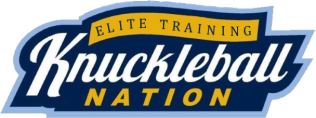Tim Wakefield is the guy who inspired me to become a knuckleball pitcher. In fact, I was so fascinated with the knuckleball at an early age that I never pitched conventionally in my life. And it’s all due to that nasty Tim Wakefield knuckleball.
My father had season tickets to the Red Sox, and we lived in a suburb of Boston, Massachusetts. During the humid summer days, my father would occasionally come home from work with good news. We were going to the Sox! We only got to use the tickets when his clients couldn’t. So, we got to go about a dozen times per year.
One day, my father found me throwing my wiffleball knuckleball in the backyard with my friends. He had tickets to that night’s game, so we loaded up the car and took off for Boston. It was the night I would be introduced to Tim Wakefield’s knuckleball.
For the first time in my life, my father let me and my young buddies loose inside Fenway. We toured the ancient ballpark and tested out different seats. We got kicked out of Steven King’s season ticket seats near the home dugout’s batter’s circle before we ended up right behind the backstop.
Tim Wakefield Knuckleball Near No-hitter
That Tim Wakefield knuckleball would be good enough for a near-no-hitter that night. He flummoxed the Oakland Athletics for eight innings before giving up a double in the ninth. It was one of Tim Wakefield’s best outings as a Red Sox knuckleball pitcher.
In between innings, I had front row seats to one of the most beautiful things I’ve ever seen — that darting Tim Wakefield knuckleball. The umpire would clear out of the way for the between-inning warmups, and I was treated to no-spin theater. It was so mesmerizing that, at first, I didn’t think it was real.
Tim Wakefield’s knuckleball didn’t spin a stitch that night. It looked like it was drawn like a cartoon, and a flitted right and left before diving right into the catcher’s lap. With my young eyes, I could see “Rawlings” printed on the ball.
And it gave the hitters fits. They’d watch a strike, flail at the second Tim Wakefield knuckleball and then hit a weak ground ball. And Wakefield was pouring in the strikes that evening.
I was smitten. At that young age, I resolved to figure out how to throw the knuckleball. And I had dreams that, one day, I would throw a knuckleball in front of a boy that would make it his dream. On that day, I promised myself that I would perpetuate this dying art in the baseball world.
Don’t Try To Copy The Tim Wakefield Knuckleball
Trying to copy the Tim Wakefield knuckleball is a pitfall. I discovered that the hard way growing up. You see, Tim Wakefield was a great athlete. In fact, he set homerun records in college and was even drafted as an infielder. And if he wasn’t discovered as a pitcher by the Pittsburg Pirates organization, then none of us would have been able to see that Tim Wakefield knuckleball.
After coming home from that experience at Fenway Park, I started to study Wakefield on TV. I wrote down all of his movements and timing. And on TV, it simply looks like he is flipping the ball to the plate without much effort. He doesn’t really use his legs, he takes a short stride and his arm action is really tight to his body.
This type of delivery only works for Tim Wakefield. He had just enough arm strength to throw his fastball 80 miles-per-hour (in his youth) from this compact delivery. As I grew into my body, I discovered that I could throw about 80 miles-per-hour, as well, but I couldn’t do it out of this tight delivery. But it didn’t stop me from trying because I thought that was the best way to get a Tim Wakefield knuckleball.
 Tim Wakefield Knuckleball & Fastball Test
Tim Wakefield Knuckleball & Fastball Test
You should try as hard as you can to throw the knuckleball as hard as you can. Charlie Hough always told me that he would have thrown the knuckleball 100 miles-per-hour if he could, and he told me that you can’t throw the knuckleball too hard. Charlie Hough, the 24-year Major League knuckleball pitcher veteran, told me all of this before RA Dickey burst out onto the big league scene with his “angry” knuckleball.
Charlie Hough was right. You can’t throw the knuckleball too hard, and you need to be able to get it up and over 65 miles-per-hour to be effective with it at a high level. Tim Wakefield’s knuckleball looks like it’s really slow, but he was throwing it in the upper 60’s, and sometimes he touched 70 with it.
There’s a basic rule of thumb when it comes to the knuckleball’s velocity — you can throw the knuckleball 5 to 7 miles-per-hour slower than your fastball. And the ultimate goal is to get the knuckleball up over 70 miles-per-hour. That means you’ll have to be able to throw a 77 mile-per-hour fastball for strikes. And that’s the bare minimum. You should try for more.
Use Your Body & Loose Arm To Throw A Tim Wakefield Knuckleball
Velocity is going up in the Major Leagues. The average fastball sits at about 93 miles-per-hour these days. This jump in velocity is due to a variety of factors, and some of these factors are under your control.
To get a true MLB-quality Tim Wakefield knuckleball, you’ll need some velocity in your arm. And you can achieve increases in velocity through a couple of different avenues.
- Lift. Strength with never go out of style, and you can’t get too strong for pitching. Leg lifts are especially helpful, including back and front squat, deadlift and single-leg accessory work.
- Power. First, you need to get strong with heavy lifting, but the ability to lift heavy objects alone won’t help you too much in your quest for a Tim Wakefield knuckleball. You need to infuse your newfound muscles with speed, and that’s how you get the power that makes you throw harder. Strength + speed = power. And you can develop power with plyometric exercises like jumps, power cleans and medicine ball throws.
- Weighted ball training. Most of your velocity lives in your body, so strength and power will develop velocity better than weighted ball throws. That’s because weighted-ball throws only focus on the arm which is the last part of the velocity equation. But you can develop a few miles-per-hour throwing overweight and underweight baseballs. It’s not a complex program, but I’ll save it for another knuckle-blog.
- Better mechanics. Pitching is all about putting your body into a torqued position to achieve leverage and then letting that torqued body unravel in the proper sequence. This is a lengthy discussion, and you’ll find all the info you need in my Beginner, Intermediate and Advanced instructional videos.
Tim Wakefield Knuckleball: Conclusion
You need some mustard on the pitch to throw a true Tim Wakefield knuckleball, and that’s why you shouldn’t copy Wakefield’s mechanics. You need to throw like you. You shouldn’t try to throw like anyone else. But you’ll need at least a 77 mile-per-hour fastball to even be in a position to throw a Tim Wakefield knuckleball, and that might require lifting, power work, weighted ball training and mechanical adjustments.
But what if you can already throw a 77 mile-per-hour fastball? Well, you should still lift, perform power work, throw weighted balls and focus on your mechanics to throw even harder. Plus, you’ll want to be as athletic as possible on the mound in order to throw strikes, look confident and compete at a high level.



